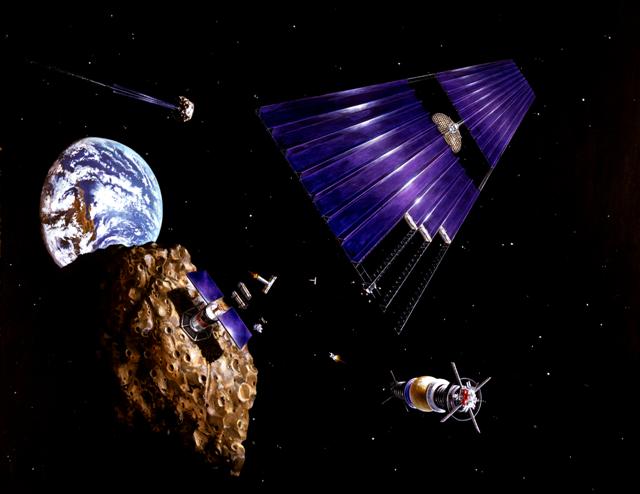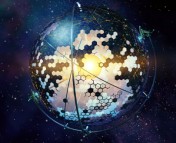Title: Could life have arrived on Earth from another planet? Is this even a falsifiable hypothesis?
Authors: Henry W. Lin and Abraham Loeb
First Author’s Institution: Harvard College
Status: Published in ApJ Letters
The origin of life on Earth might not have been in a primordial pool of organic goo, but rather, according to the panspermia hypothesis, it may have come from another planet in perhaps another solar system. Panspermia is one of the more popular alternative theories for the origins of life on Earth, but is it really testable? If panspermia isn’t falsifiable, if you can’t make predictions that allow the theory to be tested, it’s not science. (“A theory that explains everything, explains nothing.” – Karl Popper.)
This paper by Henry Lin and Abraham Loeb tackles this hypothesis’s falsifiability by simulating panspermia as life spreading throughout the galaxy like an epidemic. The galaxy is effectively simulated as a lattice of stars each with a habitable world, where, in the beginning, all planets are uninhabited. At each time step in the simulation, a certain fraction of randomly chosen uninhabited planets become inhabited. In other words, there’s a chance for life to form spontaneously on each planet at any time.
Panspermia comes into play after life has first appeared. The authors assume a very efficient spreading of life. They do not distinguish between intelligently guided panspermia (life purposely traveling from planet to planet) and lithopanspermia (life being spread by asteroids or comets by chance). At every time step, every neighbor of an inhabited planet also becomes inhabited. A bubble is formed around each planet where life formed spontaneously. Bubbles are larger around planets that formed life earlier and smaller around planets that just recently created life.
Contrast these bubbles to a galaxy where panspermia is nonexistent. Instead of bubbles of life in the galaxy, there would just be individual planets in a sea of uninhabited worlds. See Figure 1 for schematics of the two models.

Figure 1: Two schematics of life in a galaxy with panspermia turned on (left) and off (right). With panspermia on, each spontaneous formation of life is the peak of a triangle. Life that formed earlier has larger bubbles, shown as triangles. As time goes on, bubbles can overlap. With panspermia off, whether or not a planet spontaneously forms life has no effect on the surrounding areas. They are all isolated events.
So, what would this look like from Earth? The key difference between the panspermia scenario and the non-panspermia case are the bubbles. If humans were to discover clusters of extraterrestrial life in the galaxy, this can be taken as evidence of panspermia. On the other hand, if planets with extraterrestrial life are observed to be isolated from one another, this implies that panspermia is rare or non-existent. The authors note a particularly favorable scenario for proving panspermia. If Earth is on the edge of a bubble, then all the nearby habitable worlds on one side of Earth will have life.
As always, there are complications. In the sudden onset of life everywhere at the same time, in the limit where life forms spontaneously very easily, life becomes distributed everywhere instantly. In this scenario, it is difficult to determine whether life can spread between planets or not.
Another complication is that stars in the Milky Way are not in a static lattice. They orbit around the center of the galaxy and can move inward and outward, upward and downward. If life spreads faster than the relative speed of stars, the motion of the stars becomes negligible. If life spreads at a speed similar to the velocity of stars, results are similar to a galaxy with stationary stars. The authors imagine this scenario as giving each star in the lattice the chance to swap with a neighbor at each time step. If neither planet has life, or if both planets have life, this doesn’t have any effect. Even if an inhabited system swaps with an uninhabited system though, life will spread from the inhabited world to the uninhabited world regardless, making this effect negligible in this scenario. In the case where life spreads slower than the typical velocity of stars, one can treat the spread of life as a slow diffusion. In this limit, the growth rate of bubbles is slower and could lead to some isolated pockets of life as bubbles split.
One additional complication is the fact that, after life spreads to a new world, the time it takes for that life to be detectable may be highly variable. This will blur the edges of the bubbles because, even if life spreads at an even pace, the detectability of life might not.
So could life have arrived on Earth from another planet? It remains theoretically possible. Is this even a falsifiable hypothesis? In a rare exception of Betteridge’s Law of Headlines, the answer is a cautious yes.




